When Japan’s military got word about Operation Causeway, an all-out invasion of Taiwan the Americans were considering in 1944, they set about preparing their defenses. In one location in the south, an enormous complex of bunkers, tunnels, pillboxes and command posts was dug into a mountain overlooking the beach where it was anticipated the Americans would try to land. This reminder of the bloody invasion that could have been now lies abandoned but mostly intact in Pingtung County’s Fangliao (枋寮) Township.
After sitting dormant for decades, this complex — known as the Stone Barracks (石頭營) in Chinese — found itself in the public spotlight again recently when a renewable energy company started building a solar farm on land adjacent to the old military site. Locals protested the environmental destruction that was, ironically, happening in the name of environmentally-friendly energy. They were also concerned about the loss of habitat for the several bat species that were living in the manmade tunnels and, of course, the potential destruction of the tunnels themselves.
The solar farm’s construction was entirely legal, and even though the presence of these fortifications was known when the development permits were issued, the fortifications were not deemed any more important than the rest of the land as they were already “abandoned.” Only after locals started to protest was construction temporarily halted so that investigations could be conducted and plans for the next phases of construction altered to preserve these important remains.
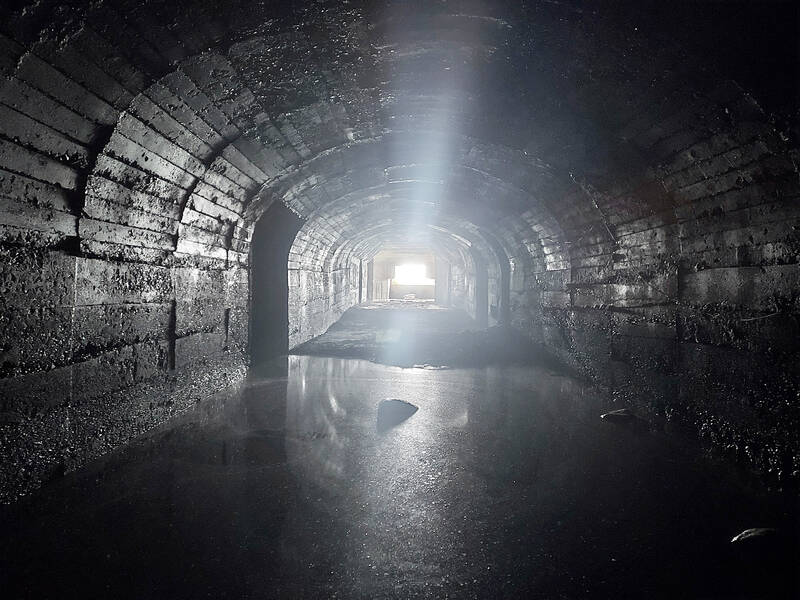
Photo: Tyler Cottenie
A FAKE TEMPLE AND A FAKE TOMB
In fact, the whole area surrounding the solar farm is peppered with a combination of Japanese-built fortifications, others built by the Republic of China (ROC) and others that were originally Japanese but repurposed by the ROC. Some of these are standalone while many are interconnected. The easiest ones to find are right along the entrance road to the Shengli solar farm (生利太陽能光電廠), which is just to the east of the Dapeng electrical substation on Pingtung County Road 185. Several three-meter-high gun emplacements are embedded in the hillside on the left side of the road. More likely lie further ahead, but there is a gate blocking access as the land belongs to the solar farm. The structures are in excellent shape and can be freely entered on foot. Heading south on the road that parallels County Road 185, another half-dozen pillboxes are hidden just behind the bamboo on the left side of the road.
More difficult to locate — but much more intriguing — are the fortifications in nearby Sinkai (新開) Village, to the south of the solar farm. After driving through the core of the village, there is a fork in the road about half a kilometer ahead. Take the left fork and you will soon see a pillbox on the side of the road. Have a look around here for a concrete temple hidden in the bushes: this is actually not a temple but a secret entrance that connects to the pillbox through a short tunnel.
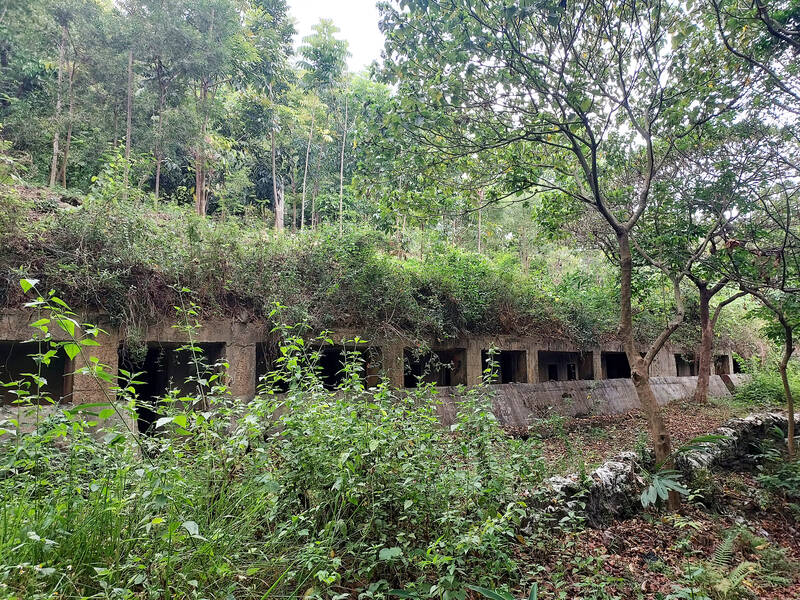
Photo: Tyler Cottenie
Just around the next curve in the road, hidden in the bushes on the left, is a small network of tunnels that are actually brick-lined trenches topped with concrete slabs and vegetation. The tunnels are invisible from ground level, and though their entrance is in plain sight, it too is undetectable. A fake tombstone, complete with inscription and virtually identical in style to the tombstones seen throughout rural Taiwan, has been erected to disguise the entrance. After removing the concrete block covering the square manhole in front of the tombstone, you can lower yourself into the tunnel below.
THE MOUNTAIN FORTRESS
The largest of the fortifications in the area is without a doubt the mountain itself behind the solar farm, to the north-east. The easiest access is from behind the mountain, in Chunri (春日) Township. Take County Road 132 to Lili Elementary School and then take the road uphill in the direction of the solar farm. On the left side of the road is a long rectangular building, dug into the mountainside and hidden under thick vegetation. This would have been the command center, well protected from coastal bombardment by the mountain itself. Climb up to the top of the hill on the right for an excellent view of the solar farm and the coastline below. This is also where you will find the entrance to the massive underground fortress built by the Japanese to defend against the American invasion.
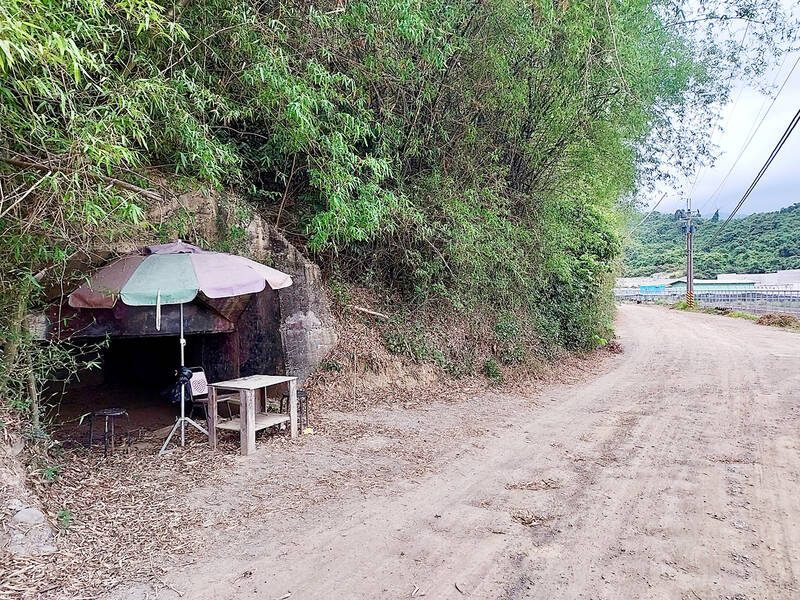
Photo: Tyler Cottenie
The entrance opens into the topmost of three gun emplacements arranged vertically down into the mountain, each with a wide-angled port allowing for artillery bombardment of the entire coast. Branching off of one of these levels is a narrow, steep staircase descending even further into the mountain. No daylight penetrates here and walking down into the musty darkness with only the bouncing illumination of a headlamp and the spider crickets on the wall for company can be a rather chilling experience. A dusty electrical cord with a bare incandescent bulb every few meters still lines the staircase wall.
After nearly 100 steps down into the Earth, the staircase opens into an enormous manmade tunnel. The smells and sounds of an active bat habitat are unmistakable. Bats hang from the tunnel ceiling and piles of guano cover the floor, while their chirping and fluttering are a welcome change from the oppressive silence of the stairwell. In one direction, this large tunnel has already caved in. In the other direction, however, daylight can be seen. Another large gun emplacement overlooking the coast sits at the end of this tunnel, now flooded from wall to wall. More corridors and rooms branch off from both sides of this tunnel, just waiting to be explored.
Anyone visiting the site in person should be aware that these fortifications are in no way maintained and there is no guarantee the fortifications won’t collapse. Some or all of the sites may also be located on private property. For those who’d rather not explore the site in person, a superb video about these fortifications, including a lengthy tour of their interior, is on GuanXi Taiwan’s YouTube channel and is entitled “The Lost Wartime Tunnels of Taiwan.”
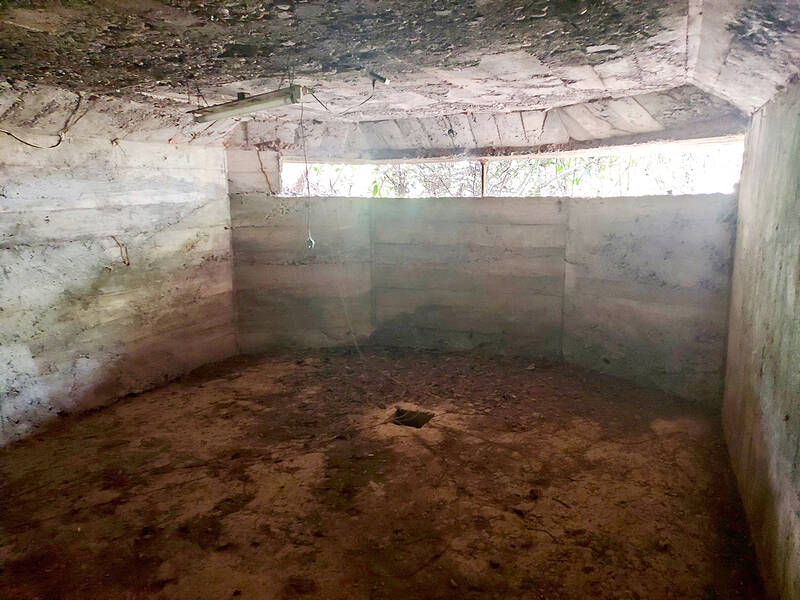
Photo: Tyler Cottenie
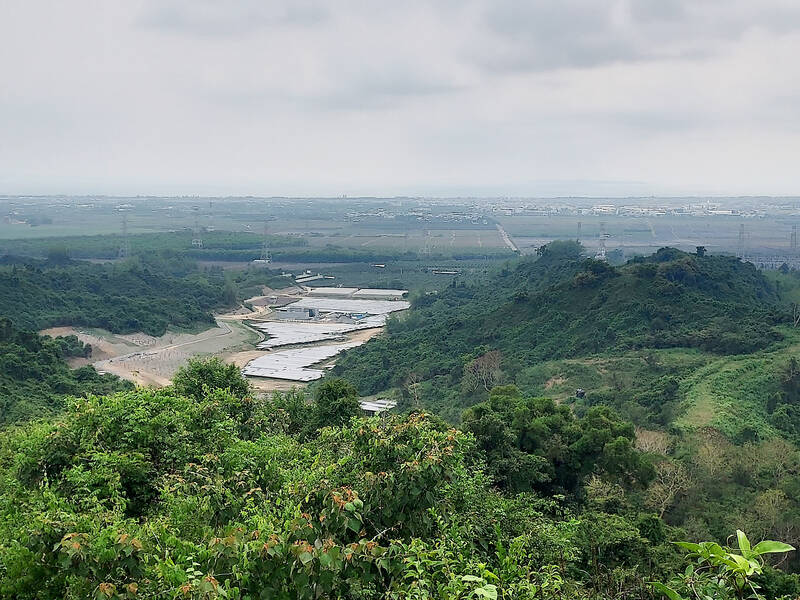
Photo: Tyler Cottenie
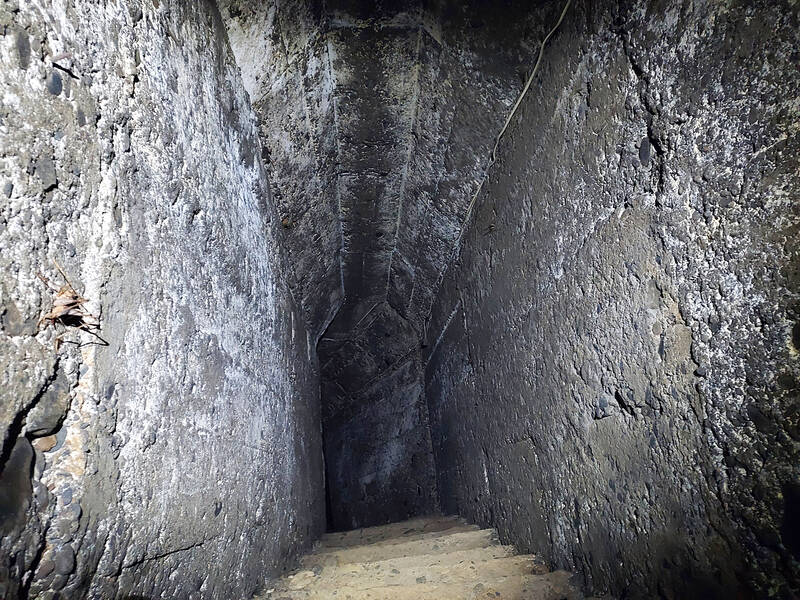
Photo: Tyler Cottenie
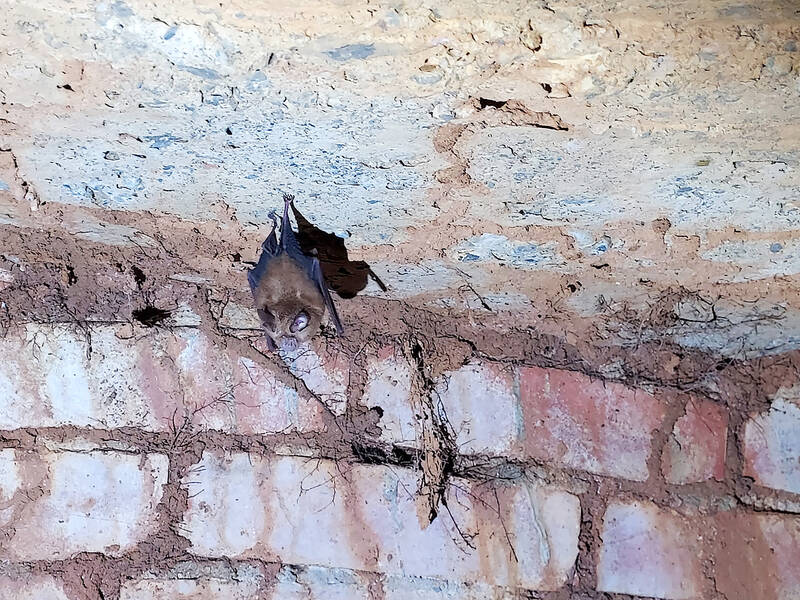
Photo: Tyler Cottenie

The slashing of the government’s proposed budget by the two China-aligned parties in the legislature, the Chinese Nationalist Party (KMT) and Taiwan People’s Party (TPP), has apparently resulted in blowback from the US. On the recent junket to US President Donald Trump’s inauguration, KMT legislators reported that they were confronted by US officials and congressmen angered at the cuts to the defense budget. The United Daily News (UDN), the longtime KMT party paper, now KMT-aligned media, responded to US anger by blaming the foreign media. Its regular column, the Cold Eye Collection (冷眼集), attacked the international media last month in

On a misty evening in August 1990, two men hiking on the moors surrounding Calvine, a pretty hamlet in Perth and Kinross, claimed to have seen a giant diamond-shaped aircraft flying above them. It apparently had no clear means of propulsion and left no smoke plume; it was silent and static, as if frozen in time. Terrified, they hit the ground and scrambled for cover behind a tree. Then a Harrier fighter jet roared into view, circling the diamond as if sizing it up for a scuffle. One of the men snapped a series of photographs just before the bizarre

Power struggles are never pretty. Fortunately, Taiwan is a democracy so there is no blood in the streets, but there are volunteers collecting signatures to recall nearly half of the legislature. With the exceptions of the “September Strife” in 2013 and the Sunflower movement occupation of the Legislative Yuan and the aftermath in 2014, for 16 years the legislative and executive branches of government were relatively at peace because the ruling party also controlled the legislature. Now they are at war. The Democratic Progressive Party (DPP) holds the presidency and the Executive Yuan and the pan-blue coalition led by the
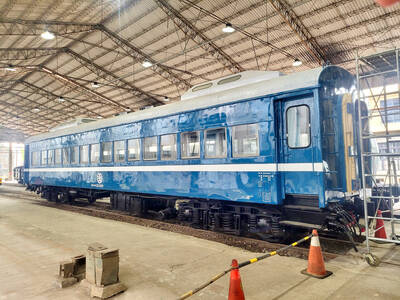
For decades, Taiwan Railway trains were built and serviced at the Taipei Railway Workshop, originally built on a flat piece of land far from the city center. As the city grew up around it, however, space became limited, flooding became more commonplace and the noise and air pollution from the workshop started to affect more and more people. Between 2011 and 2013, the workshop was moved to Taoyuan and the Taipei location was retired. Work on preserving this cultural asset began immediately and we now have a unique opportunity to see the birth of a museum. The Preparatory Office of National